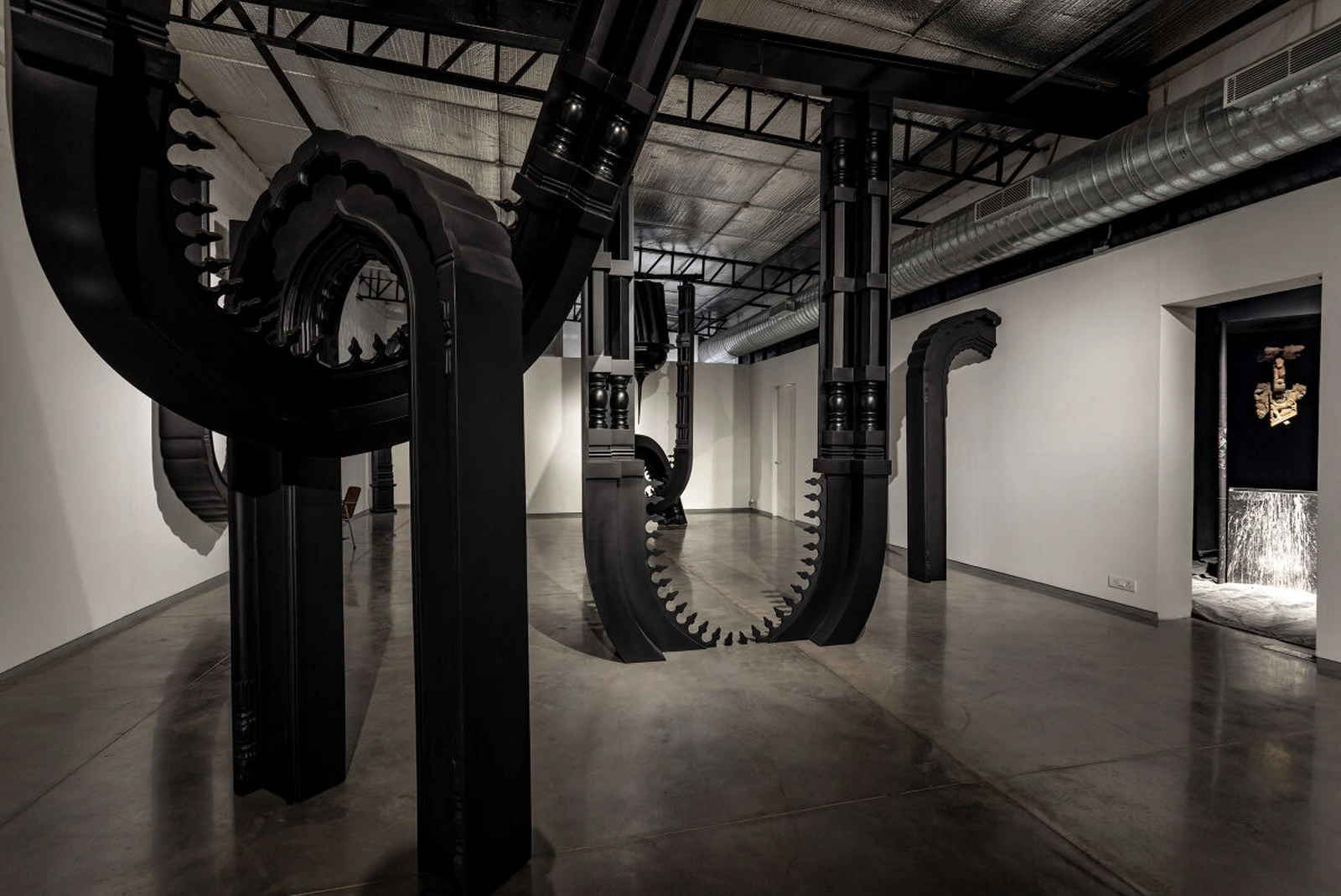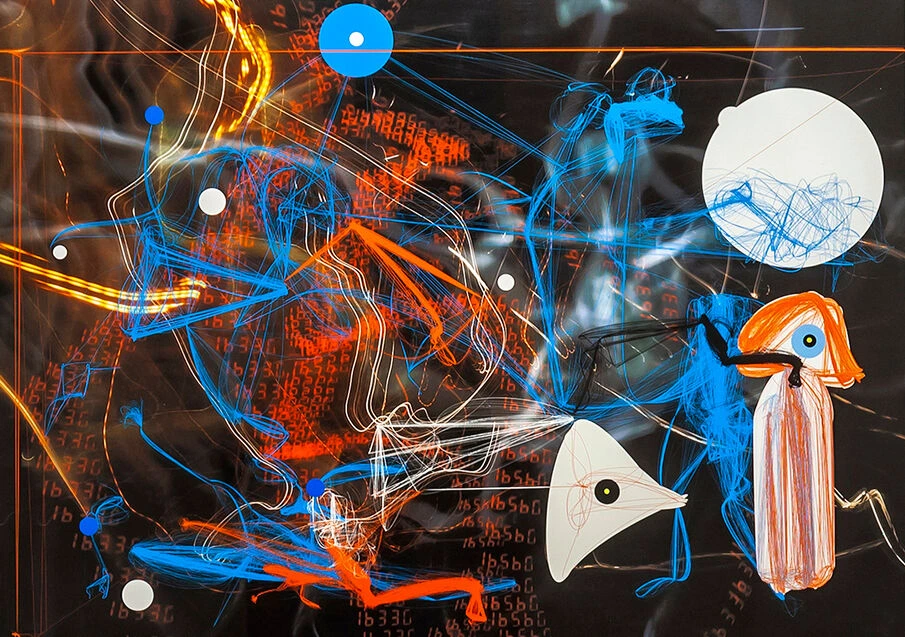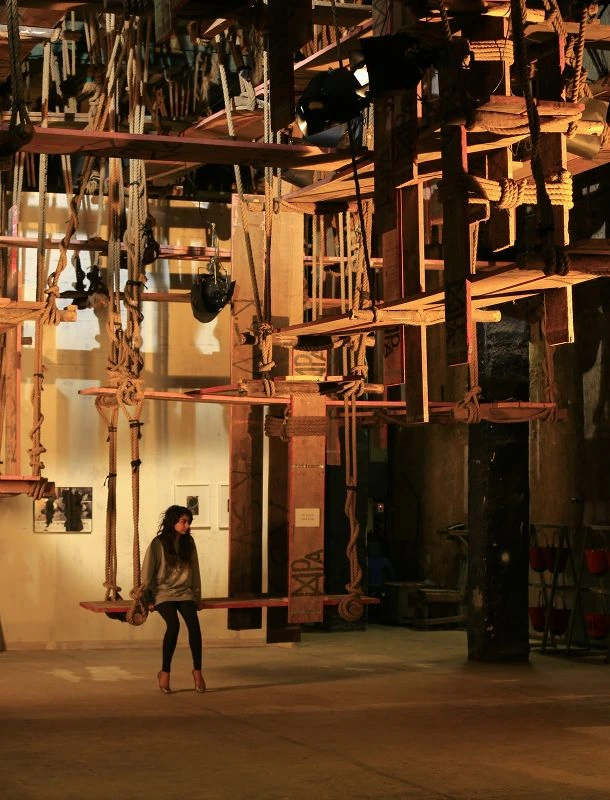New delhi
Uncounted Rounds
Uncounted Rounds refers to struggles that exceed measure: the recurring cycles of sowing and failure under shifting climates, the endless negotiations between body and land, and the lives left unacknowledged in official histories. The exhibition gathers both protest and persistence, suggesting that the match is never truly over while the fight for dignity, survival, and recognition continues.
In a dialogue involving painting, sculpture, and installation, Thukral and Tagra’s exhibition unfolds around an unfinished contest between survival and erasure, labour and recognition, voice and silence. Responding to the Punjabi farmers’ protests of 2018–2021 which took place on the outskirts of Delhi, Thukral and Tagra present works that speak to collective memory and resilience, including archives of the Trolley Times newsletter, a monumental account of lives lost, and paintings that reimagine the akhara (wrestling arena) as a field of endurance.
About the artists
Thukral and Tagra are a Delhi-based artist duo comprising Jiten Thukral (b. 1976, Jalandhar, Punjab) and Sumir Tagra (b. 1979, New Delhi). Driven by the artistic methodologies of painting, gaming, archiving, and publishing, their multifaceted studio practice reflects the scope of engagement in the cultural and political landscape of India and the world. While their early career work dealt with the intricacies of consumer culture globally, their recent interest in ecology and climate change is a revisiting of their family histories of migration and farming in the Indian state of Punjab.
Through and beyond their studio practice, Thukral & Tagra create new formats of public engagement and attempt to expand the threshold of what art can do. These also include the non-profit Foundation that addresses ongoing social issues through education and art, their collaborative learning lab Pollinator that fosters cross-pollinations across creative fields, and the new publishing and distribution platform andArchive that reconfigures the potential of the print and the archive. Further, their immersive and multi-modal sensory installations offer seamless accessibility to audiences from varied backgrounds and approaches, breaking through the spectatorial protocols of “high art.”
This exhibition will take place in Nature Morte’s Delhi gallery space at the Dhan Mill compound, 100 Feet Rd, Chhatarpur Hills, New Delhi. The hours are Tuesday through Sunday from 11am to 7pm and the gallery is closed on Mondays.

“A two line headline for the video or photo above”
– Attribution
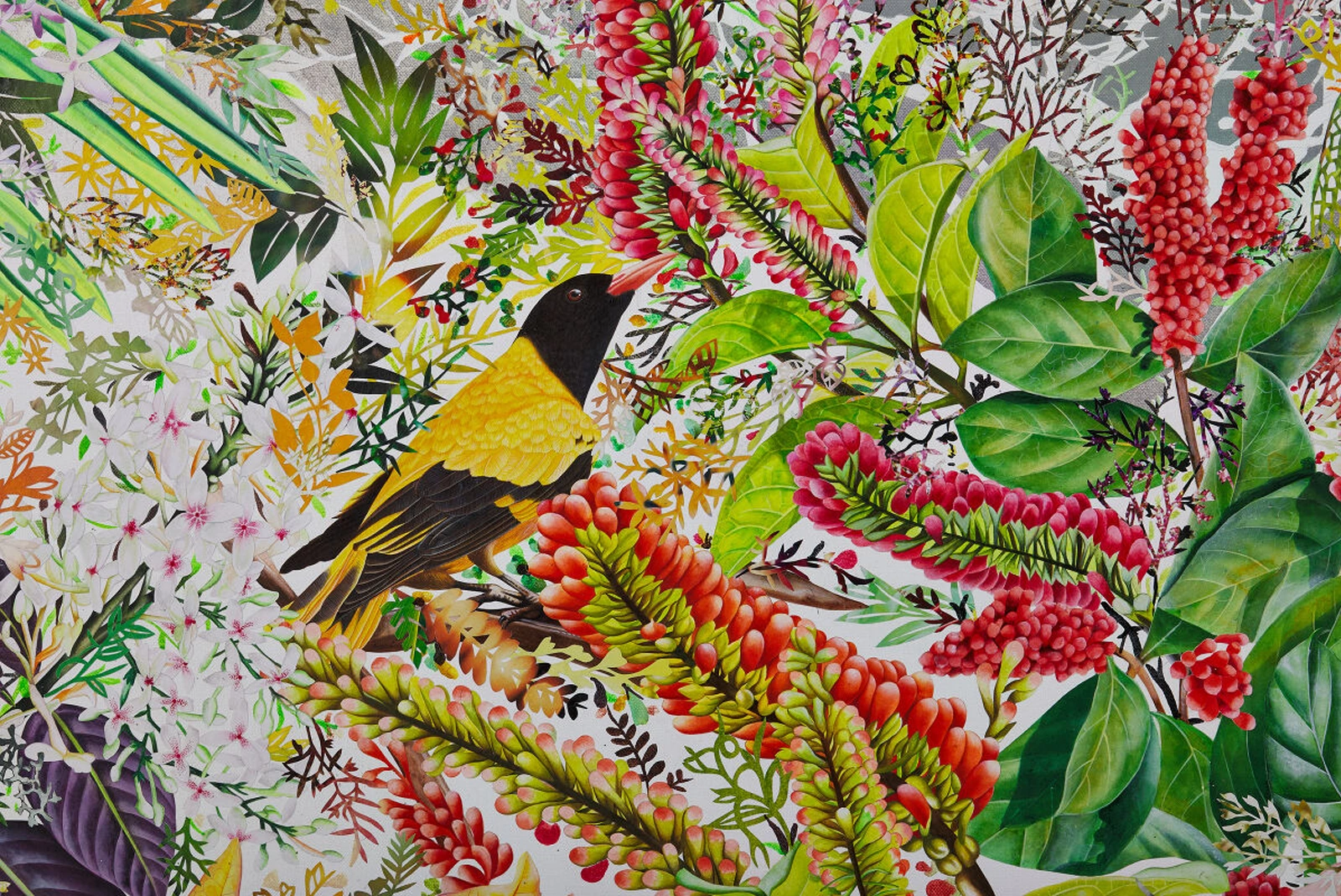
A TWO LINE HEADLINE FOR THE VIDEO OR PHOTO ON THE LEFT
The curator of ‘Soft Landscape’ reveals four interlocking dialogues that revolve around an iconography of nests, holes, cavities, mounds, breasts, spirals, snakes and water.
A TWO LINE HEADLINE FOR THE VIDEO OR PHOTO ON THE LEFT
The curator of ‘Soft Landscape’ reveals four interlocking dialogues that revolve around an iconography of nests, holes, cavities, mounds, breasts, spirals, snakes and water.


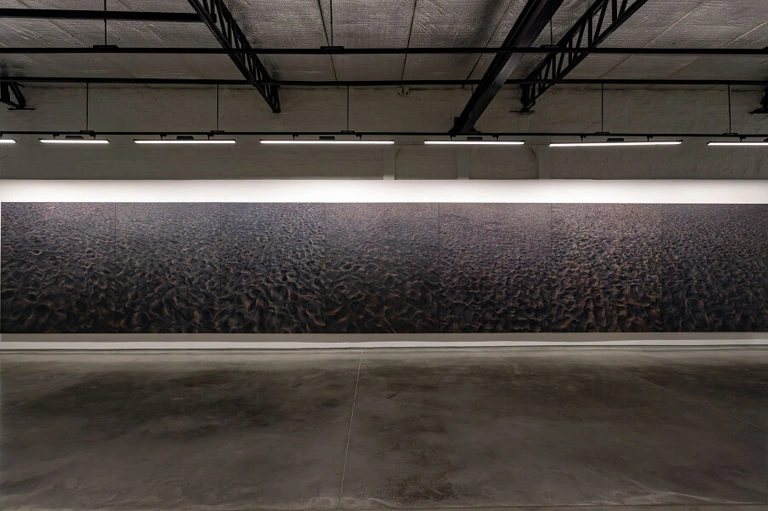

Founded in New York's East Village in 1982 and closed in 1988, Peter Nagy revived Nature Morte in New Delhi in 1997 as a commercial gallery and a curatorial experiment. In the early years, Nature Morte became synonymous in India with challenging and experimental forms of art; championing conceptual, lens-based, and installation genres and representing a generation of Indian artists who went on to international exposure. Today, Nature Morte is the leader in its field in India with increasing visibility around the world, representing many of the most accomplished contemporary artists working in India today, fostering the most promising new talents, and introducing the works of international artists to the country. The gallery now has
Founded in New York's East Village in 1982 and closed in 1988, Peter Nagy revived Nature Morte in New Delhi in 1997 as a commercial gallery and a curatorial experiment. In the early years, Nature Morte became synonymous in India with challenging and experimental forms of art; championing conceptual, lens-based, and installation genres and representing a generation of Indian artists who went on to international exposure. Today, Nature Morte is the leader in its field in India with increasing visibility around the world, representing many of the most accomplished contemporary artists working in India today, fostering the most promising new talents, and introducing the works of international artists to the country. The gallery now has
Founded in New York's East Village in 1982 and closed in 1988, Peter Nagy revived Nature Morte in New Delhi in 1997 as a commercial gallery and a curatorial experiment. In the early years, Nature Morte became synonymous in India with challenging and experimental forms of art; championing conceptual, lens-based, and installation genres and representing a generation of Indian artists who went on to international exposure. Today, Nature Morte is the leader in its field in India with increasing visibility around the world, representing many of the most accomplished contemporary artists working in India today, fostering the most promising new talents, and introducing the works of international artists to the country. The gallery now has





